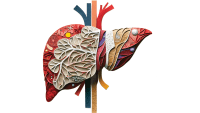Catheter-associated urinary tract infections (CAUTIs) are common healthcare-associated infections that can prolong lengths of stay and increase morbidity and mortality. Despite their best efforts, many hospitals continue to struggle with climbing CAUTI rates. Recognizing inappropriate or prolonged urinary catheterization as a primary risk factor, our team decided to target urinary-catheter device days as a way to reduce CAUTIs.
The specific aim of this quality-improvement initiative was to decrease the number of urinary catheters inserted and reduce the time they stayed in place. Each additional day of indwelling catheterization further increases the risk of developing a CAUTI. We anticipated that by inserting fewer catheters and removing them earlier, we would decrease CAUTI incidence.
Targeted areas for improvement included all five of the noncritical care units at our 140-bed community medical center. At the start of this initiative, our critical care unit was exceeding at preventing device-associated infections, but our medical-surgical units were seeing a higher-than-expected CAUTI incidence. As we approached 2013, a system-wide task force was poised to introduce several evidence-based initiatives aimed at reducing CAUTIs.
In addition to the task-force solutions intended to standardize the evidence-based processes used with urinary catheters, our team added several other strategies to enhance our culture of safety and accountability around urinary catheters. To monitor our progress, we identified the urinary catheter device-utilization ratio (DUR) and actual number of CAUTIs as performance measures. Reported monthly, the DUR reflects the proportion of total patients with indwelling urinary catheters. Before our project began, validation studies were done to ensure the accuracy of DUR reporting. CAUTIs were identified and reported by the infection preventionist.
Electronic solutions
In January 2013, we implemented several electronic solutions to support our goal of reducing urinary catheter device days. We also implemented evidence-based indications for urinary catheter insertion and maintenance, based on guidelines from the Healthcare Infection Control Practices Advisory Committee (HICPAC) and the Association for Professionals in Infection Control and Epidemiology (APIC), recommended by the system-wide task force for CAUTI prevention. (See Evidence-based indications for indwelling urinary catheters).
Time-limited catheterization orders and a nurse-driven protocol for catheter removal were the primary electronic solutions supporting this initiative. We also implemented:
- an algorithm for bladder scanning and intermittent catheterization for failure to void
- electronic alerts to remind physicians and nurses when a temporary catheter had been in place more than 48 hours
- revised nursing flowsheets to align our documentation with intervention-bundle recommendations from HICPAC and APIC.
These interventions reinforced our commitment to keeping each catheter in place only as long as medically indicated.
Clinician education and training
Recognizing the importance of clinician education and training to
improve outcomes and prevent complications related to urinary catheters, we partnered with the manufacturer of our urinary catheters to develop and implement a training program aimed at expanding knowledge and improving catheter insertion and maintenance competencies. Each unit identified a nurse champion to attend this special training event. In addition to acquiring knowledge and skills, champions learned strategies for sharing the information at the unit level.
As part of the training program, skill stations were set up to review competencies and update techniques. Training emphasized the maintenance bundle and daily reevaluation of the continued need for a catheter.
Nurses aren’t the only clinicians who interact with catheterized patients, so a special session was held for non-nursing staff, such as physical therapists and transport personnel. This contributed to an overall increase in bundle compliance.
Improving our culture of safety
The final and most challenging aspect of this initiative was implementing interventions aimed at improving our culture of safety and accountability around urinary catheters. We recognized this as the most crucial step to sustaining the change. Our goal was to transform our culture from one where the urinary catheter is considered the norm for certain types of patients to one where it’s seen as an exception.
Daily review of all catheters
The team implemented a daily review of all catheters, including the indication for the catheter and patient’s length of stay, at unit-based shift huddles and the daily hospital-wide safety huddle. Sharing this information in as many forums as possible provides an opportunity for peer coaching and peer checking. It encourages nurses to challenge each other about the patient’s ongoing need for a catheter and offers a forum to suggest alternatives.
Partnering with physicians also was crucial to the success of our project. To gain physicians’ participation and input, we incorporated a review of urinary catheters at daily interdisciplinary rounds. This promoted further collaboration and teamwork around this initiative.
Finally, we engaged patients and family members, explaining the risks associated with catheterization and setting the stage for early removal at the time of catheter insertion. One of our best strategies has been to educate patients so they request early catheter removal.
Redundant auditing processes
To monitor the effectiveness of our interventions, we established redundant auditing processes to determine compliance with evidence-based recommendations for in- sertion and care maintenance bundles. (See Maintenance bundle audit elements.) Clinical nurses on each unit, nurse leaders across the organization, and third-party auditors from the clinical effectiveness department participate in the audit process. Results are shared at the unit level and with relevant committees and workgroups. Trends are identified and analyzed to help determine solutions.
Compliance with each bundle element as well as overall compliance has risen steadily since implementation. For October 2014, the overall urinary catheter bundle compliance rate was 94.7%. A true measure of success for this project has been the steady decline in urinary catheter device days and the actual number of CAUTIs. (See Statistics tell the story.)
Nurses at all levels can influence patient outcomes in a positive way. By focusing on evidence-based prevention strategies and promoting a culture of safety and accountability, we were able to exceed our goal for reducing urinary-catheter device days. We saw a shift in culture when our nurses began leading the way by advocating for fewer catheter insertions and promoting earlier removal. As a result, we are well on our way to zero CAUTIs—and your organization can be, too. 9
Editor’s note: For more information about CAUTI, see “ANA CAUTI Reduction Tool” at www.nursingworld.org/MainMenuCategories/ThePracticeofProfessionalNursing/Improving-Your-Practice/ANA-CAUTI-Reduction-Tool.
Selected references
Association for Professionals in Infection Control and Epidemiology. Guide to Preventing Catheter-Associated Urinary Tract Infections. April 2014. http://apic.org/Resource_/EliminationGuideForm/0ff6ae59-0a3a-4640-97b5-eee38b8bed5b/File/CAUTI_06.pdf
Accessed November 3, 2014.
Centers for Medicare & Medicaid Services. Catheter-Associated Urinary Tract Infections (CAUTIs). http://partnershipforpatients.cms.gov/p4p_resources/tsp-catheterassociatedurinarytractinfections/toolcatheter-associatedurinarytractinfectionscauti.htmlfectionscauti.html. Accessed November 14, 2014.
Gould CV, Umscheid CA, Agarwal RK, Kuntz G, Pegues DA; Healthcare Infection Control Practices Advisory Committee. Guideline for Prevention of Catheter-Associated Urinary Tract Infections 2009. Infect Control Hosp Epidemiol. 2010;31(4):319-26. www.cdc.gov/hicpac/pdf/cauti/cautiguideline2009final.pdf. Accessed November 3, 2014.
Institute for Healthcare Improvement. How-to Guide: Prevent Catheter-Associated Urinary Tract Infections. Updated December 2011. www.ihi.org. Accessed November 14, 2014.
Catherine V. Smith is a clinical nurse specialist at Sentara Williamsburg Regional Medical Center in Williamsburg, Virginia.


















